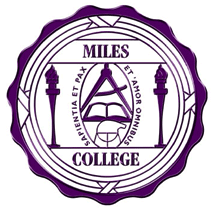 In December 2020, the board of trustees at Dixie State University in St. George, Utah, voted unanimously to ask the Utah Board of Higher Education to change the name of the educational institution. The decision came after a survey found that 22 percent of recent graduates looking for jobs outside of Utah have had an employer express concern that Dixie is on their résumé. The survey also found that 42 percent of respondents from the university’s recruiting region and 22 percent of respondents from Utah say the name makes them less likely to attend Dixie State University.
In December 2020, the board of trustees at Dixie State University in St. George, Utah, voted unanimously to ask the Utah Board of Higher Education to change the name of the educational institution. The decision came after a survey found that 22 percent of recent graduates looking for jobs outside of Utah have had an employer express concern that Dixie is on their résumé. The survey also found that 42 percent of respondents from the university’s recruiting region and 22 percent of respondents from Utah say the name makes them less likely to attend Dixie State University.
Now the board of trustees has recommended Utah Tech University as the new institutional name. The board’s vote will now go to the Utah Board of Higher Education for their vote before being forwarded to the Utah State Legislature for approval.
“The Name Recommendation Committee was tasked with a very difficult assignment with many, many factors to consider, and they recommended a name that led us to where we are now,” said David Clark, chair of the university’s board of trustees. “Utah Tech University distinguishes the university as a polytechnic institution that serves the entire state while offering a shorter name that quickly establishes our approach to education that emphasizes active learning and career preparation.”
Dixie State University was founded in an area settled by Mormons from the South. It used to have a Rebel as a mascot and in 2012 a statue of Confederate soldiers was removed from campus. Today, African Americans make up 2 percent of the 11,000-member undergraduate student body.












You can change the name all you want. However, the implicit and explicit racist ideology will still be part of the overall dominant accepted narrative.
This article should be edited to reflect the correct name of the church and its members. The term Mormon should be replaced with members of the Church of Jesus Christ of Latter-day Saints.
Sounds like somebody is a staunch supporter of 19th century racist and founder Joseph Smith.
What took so long?
With a name like “Dixie State,” one can only wonder what flights of fancy — or nostalgia — overcame them at the outset of their labors in the vineyard of higher education.